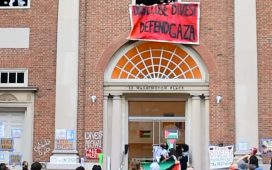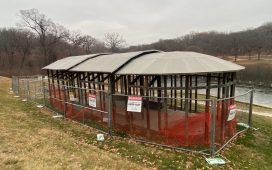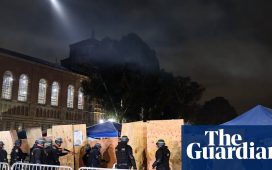Floods earlier this month damaged many of Venice’s buildings and structures
© San Servolo Servizi
Last month’s flooding in Venice risks killing the city as a living community even more than it has damaged its buildings. “This hasn’t been a flood like the 1966 Florence flood, which destroyed everything in its way. St Mark’s is like a person who has been exposed to radiation. On day one, nothing seems to be the matter, but then the hair, the teeth begin to fall out.”
This is Mario Piana, the architect in charge of the basilica, speaking after the terrible flood on 12-13 November filled the church with water. His ghastly simile applies to the whole of Venice as well. It does not take much to imagine what has happened to houses, shops and churches now that the waters have returned, day and night, for four days, with three more days of acque alte predicted at the time of writing.
But Piana’s simile stands also for the psyche of Venice. The number of residents is falling and while the exact number is a matter of discussion, the sense that this is a normal city is slipping away as more and more retreat to the mainland. After all, why should a family with a grocery or a lawyer with her practice stay on if life can be so expensively disrupted at any time?
Why, after 16 years and expenditure of €6bn, are the mobile flood barriers (Mose) still not working? This is the furious question that the Venetians are asking: why, when they are supposedly 93% finished, has almost no work been done since a major corruption scandal was discovered in 2014? Will they actually work, people ask, because it is public knowledge that technical problems have been discovered. In short, the Venetians are losing faith and hope; this is what the authorities need to address at once because these floods may well be the tipping point that kills the city.
Disasters concentrate the mind. Suddenly the government has made finishing the barriers a priority but faces two major problems. First, important decisions have to be taken but there is no obvious person or body with the power to do so. The Italian administrative system has also tied itself in knots with hundreds of often contradictory laws, many with the risk of penal sanctions for anyone bold enough to act.
Secondly, no one trusts a word uttered by the authorities about Mose, and with good reason. During the years of corruption, anyone who could obstruct their building was bribed to keep quiet: this included the head of the Magistrato alle Acque, the ministry of public works branch that was supposed to test the work and make sure that procurement and costs were as they should be. For example, a highly qualified French engineering firm has said that under certain conditions the barriers will begin to oscillate and fail, but they have been ignored. Are they right? No one knows.
At this point, for the sake of everyone’s peace of mind—decision-makers, engineers, Venetians and Venice-lovers the world over—it would make sense to get wholly independent experts to examine what has been done, help devise any modifications and assist in the completion process. Then only would the Venetians feel reassured.
The obvious country to lend a hand is The Netherlands, which has built nine dams and four major storm-surge barriers since its great flood of 1953. Not for nothing have Delhi, Wuhan, São Paolo and New Orleans consulted its flood protection agency. But to reinforce the independence of this collaboration, it would need to be financed separately from Mose, and this is where the European Investment Bank could come in, because it is about to unlock €1 trillion for climate action and environmentally sustainable investment over the next 10 years.
The key person here is the Dutchman Frans Timmermans, the executive vice president-designate of the European Commission, who is responsible for the European Green Deal. What better symbolic action could there be than starting this huge and vital investment project by ensuring that Venice is saved from the forces of nature for a few more decades, to give time to devise what will inevitably have to come next?
• Anna Somers Cocks is the founder of The Art Newspaper and is a former chairman of the Venice in Peril Fund









